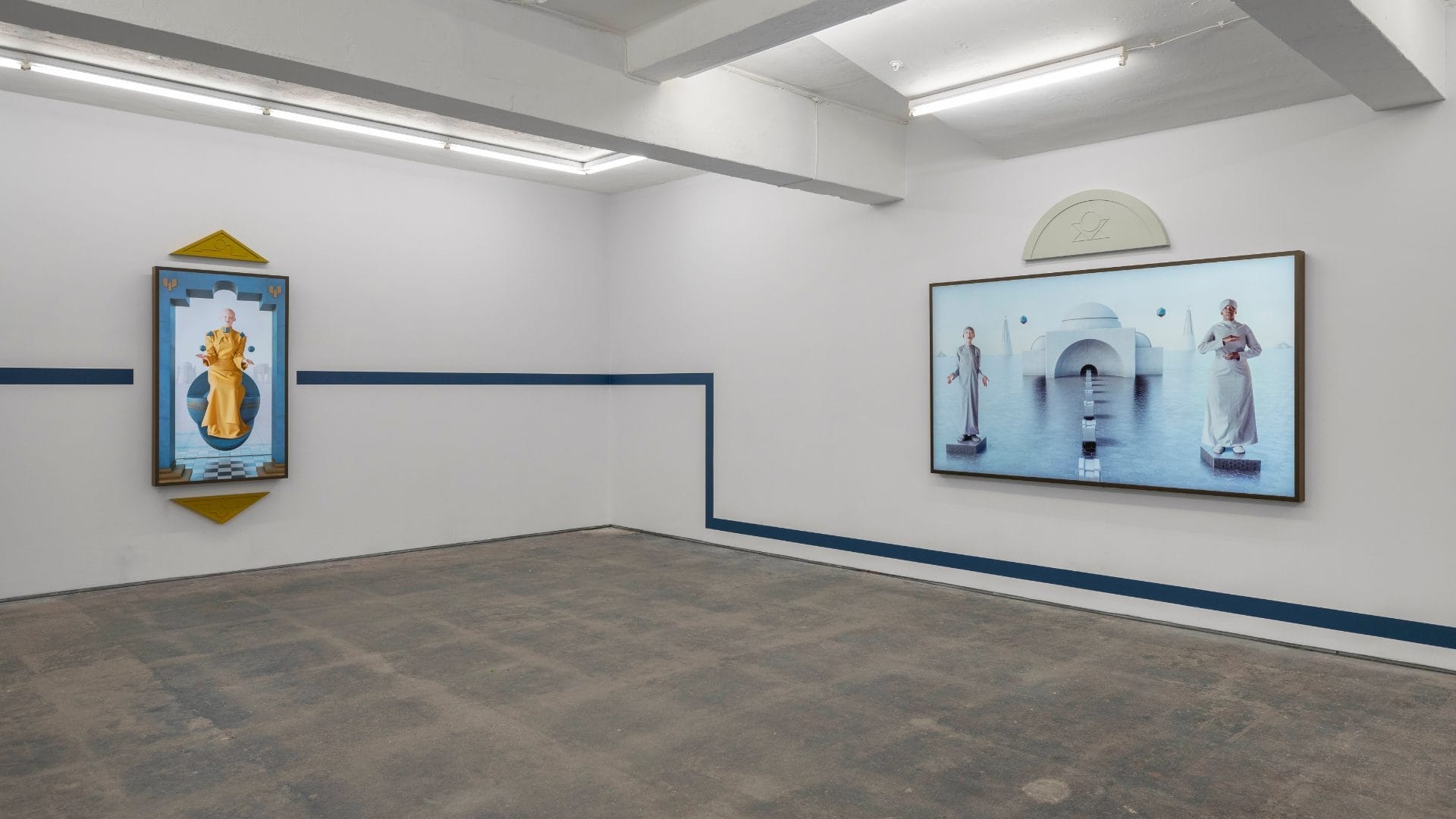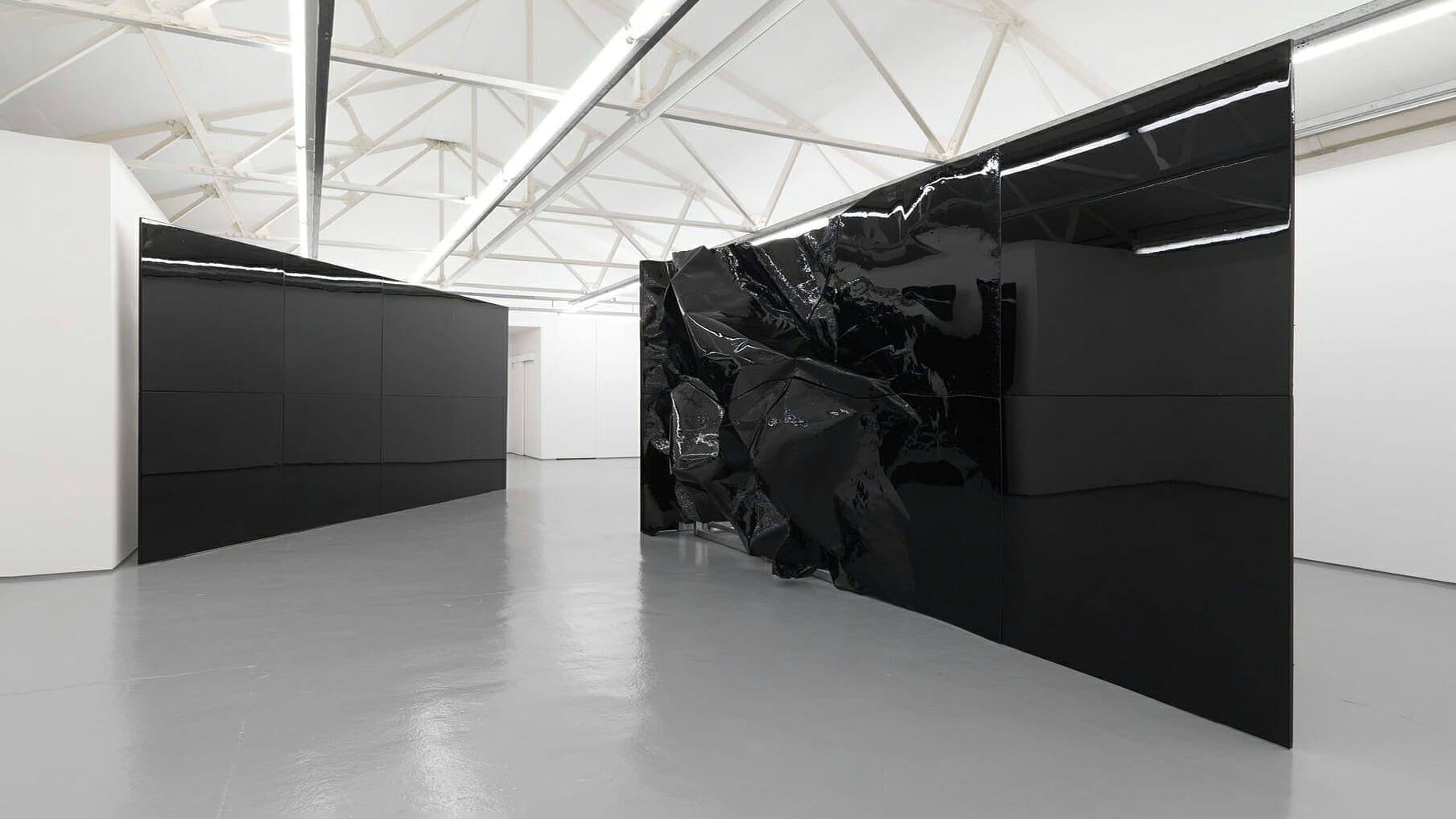
Ghosts, Holograms, and AI: Emi Kusano’s EGO in the Shell
What separates being from system is becoming almost imperceptible.
Inspired by the visionary Ghost in the Shell, Emi Kusano’s first solo show in New York examines this uncertainty in the age of AI. In EGO in the Shell, she explores how algorithms capture, filter, and refract us, rendering every gesture and emotion.
A Tokyo-based multidisciplinary artist, Kusano works across emergent technologies and digital media. She has been instrumental in bringing AI-generated art to a wider audience, translating intricate computational processes into experiences that feel alive. Her work in this exhibition reflects the paradox of selfhood today: we craft and ego-post endlessly, while what remains is transient. Through synthetic childhoods, holograms, and tech relics, Kusano asks what traces of ourselves survive when distilled into code.
The exhibition opens at Offline Gallery—the physical space run by the SuperRare team—and is co-curated by Offline director Mika Bar-On Nesher and guest curator Yohsuke Takahashi. It engages directly with the landmark anime and manga series, Ghost in the Shell, which first envisioned brain-computer interfaces, networked consciousness, and the evanescent “ghost” in the machine.
In the following Q&A, I asked Kusano to explain the influence of Shirow’s masterpiece on her thinking and the development of the exhibition.


As you started working on Ego in the Shell, which part of the anime was a trigger, and how did it drive the preparation for this exhibition?
For me, the prophetic vision was the most striking. It highlights Ghost in the Shell’s role in preparing us to accept concepts like brain-computer interfaces and AI in our daily lives. I think many scientists and entrepreneurs have been influenced by the technologies from Shirow’s narrative, which eventually became our reality. The first time I saw it, I was thrilled by its aesthetics, but today I also perceive a deep Buddhist layer in the idea of the ‘ghost’ as something impermanent.
That fusion of tech foresight and spiritual reflection became the foundation for my approach to memory and AI in EGO in the Shell.
In the OG story, Major Kusanagi wonders if her “ghost” truly belongs to her once her body and mindscape can be replicated and networked. With your AI simulating a childhood, do you see that dilemma carrying over into our world?
This dilemma is very much alive today. Memory has always been tenuous and subjective, and AI amplifies that fragility. With so much information circulating, the collective past disappears rapidly, leaving my early years partially forgotten. Sometimes I’m not even sure they really existed.
For this project, I used my own data and traits to imagine a childhood. I’m interested in identity emerging from algorithms instead of real experiences. AI records these traces in code, subject to alteration. This idea is both fascinating and unsettling, and it speeds up the post-truth period we live in.

How weird is it for you to see “Emi” through this lens? What do you hope people feel as they face it?
I showed the images to my parents, and they were shocked because the AI-created versions looked exactly like me as a kid but from a simulated life. This moment proved that memory can slip easily between truth and fiction once it’s interpreted by algorithms.
I would definitely like viewers to be affected by that same discomfort and to realize the fleeting sense of self.
Your practice often mixes tech-noir aesthetics and Asian perspectives. In what way do these two elements interact in your process?
The connection isn’t forced; it comes from growing up with ideas like impermanence in Buddhism and the animism of Shinto. Cyberpunk visions of body upgrades echo Buddhism’s notion that the self is never fixed, while the networked consciousness of machines resonates with Shinto’s idea that spirits can dwell in all things.
This dialogue continues instead of creating something entirely new.
The holographic interrogation room recalls those Ghost in the Shell scenes where there is no clear distinction between mind and system projection. When people experience it, do you want them to be destabilized in the same way, questioning whether their own past experiences are real or already controlled by technology?
I felt disoriented as if my memories were leaking into the holograms when I first encountered it. It made me aware of the thin wall between what we remember and what machines can fabricate.
Ideally, visitors experience the same environment, with recollections suspended in ephemerality — a setup that frames AI as a co-creator.

In EGO in the Shell, AI is basically co-authoring the content. Do you think of it more like a creative partner or maybe a trickster that messes with your sense of you?
AI is never just one of these things. It’s a partner that thinks alongside me, a mirror reflecting parts of myself I don’t always want to see. At times, it manifests as an ethereal presence, inseparably intertwined with me.
In my artistic process, it moves beyond being a tool and becomes almost a shared consciousness. That ambiguity helps keep the work authentic.

The Tachikoma are fascinating in the anime—playful robots capable of profound insights into existence. In EGO in the Shell, when you give devices a kind of spirit, do you see them more as synthetic companions like the Tachikoma, or something more unpredictable?
It’s hard to pin down. I see these machine spirits as ambiguous, more like yokai or even Pokémon. Sometimes cute, sometimes not. Yokai were often embodiments of human fears or desires, and I think AI works in a similar way: if we feed it our biases, it channels them back, just as those mystical entities once revealed human emotions.
I would say they are less companions or enemies than an expression of what we carry inside.

Your work gives a unique aura to machines. What transforms a screen or hologram into something that feels alive, emotional, or even ritualistic?
When I entered the venue, it came across as a sacred space, almost like a church with light pouring in from above. I knew immediately that I wanted to build an altar. That altar had to be made of tech relics, what I call OOPArts, such as stacked CRT monitors. Once computer-made memories are projected through them, the perception of reality subtly shifts.
With the holograms, I wanted to create something beyond images: a presence in the room, a lingering spirit.
Looking at AI and surveillance influencing our surroundings, what would you like people to take away?
I hope they leave with a taste of wonder at technology and a quiet unease about how it shapes our most intimate experiences.
Rather than offering answers, the work opens a space to confront identity and truth in 2025.

Benoit Palop
Benoit Palop is a Tokyo-based producer, writer, and curator with over 13 years of experience exploring how digital ecosystems, decentralized networks, aesthetics, and communities shape culture. He co-founded LAN Party, a curatorial and research duo focused on internet subcultures and gaming theory, and holds a Master’s degree in Research in Digital Media from Sorbonne University, Paris.
You may also like
Meta-Mythical Optimisation” by Chino Moya: An Apocalypse of Routine in Monastic Robes
“Utopia is a necessary dream. But also an inevitable nightmare.” We walk into Chino Moya’s exh
Banks Violette: the Paradoxical Beauty of Mortality
Art is a mirror to the mind of the artist, providing a complex reflection of thoughts, emotions, and
Nico Vascellari: “Pastorale” at Palazzo Reale, Milan
“I remember swallowing a cherry pit as a child…” From this very first line, Nico Vascellari in




